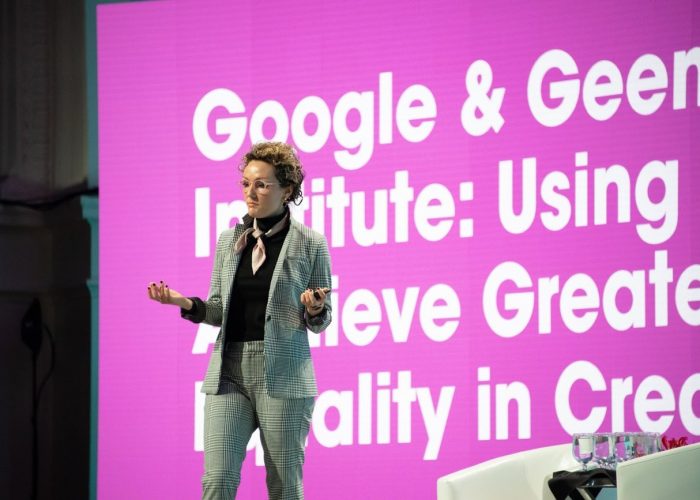How would you describe your job at a dinner party?
My team works with the people who design and build some of Googles most used and loved products like Search, Maps, Photos and News to make them more equitable, more inclusive and simply work better for everyone. We also work to ensure people see positive portrayals of themselves in the stories Google tells. So for example, we partnered with community-based organizations to drive equity in our COVID-19 vaccine response and worked with the trans community to make reminiscing with Google Photos more inclusive.
Tell me more about Googles efforts to bring gender equity to sports.
During the 2015 Womens World Cup, I was frustrated about the explicit lack of media coverage, pay disparity and product features for the biggest stage of womens soccer. Fast-forward to late 2019, we asked ourselves, “What if we applied the notion of Title IX to our own investment in sport?” So we started what we colloquially called “Project IX,” an effort that spread throughout media, marketing and engineering teams across Google and YouTube. The goal being to better support and highlight womens sports, all year, not just in big moments.
What are some of the specific ways you tried to do that?
While many of us are former athletes, the real experts are outside Google. We had countless conversations with the WNBA and NWSL, player’s associations, nonprofits and media partners like Just Womens Sports, Women’s Sports Foundation and AthleteAlly. This helped us zero in on what role Google can and should play in championing gender equity.
As a tech company, we can focus on our products by taking accountability and making sure were not just focusing on monetary investment but examining how every decision we make can be more equitable. For instance, over the past few years, weve made it easier to follow more than 250 womens leagues on Search.
The WNBA sponsorship was a big deal for Google. How does that fit into Project IX and whats next?
Working with the league and ESPN to deliver 25 nationally televised games this season and a dedicated segment for womens sports in ESPNs SportsCenter were important first-steps and what Project IX is all about. The WNBA is on the forefront of social and racial justice, so as we deepened our commitment to racial justice, this partnership made sense.
As part of Project IX, we wanted to increase our media spend in sports, not just during huge moments like the WNBA Playoffs, but throughout the season. We quickly saw the lack of content on broadcast. So over the next three years, were adding 300 hours of women’s sports content to broadcast and digital to help increase representation, create more opportunities for advertisers and importantly, allow more people to see just how stellar these athletes are.
How have your personal experiences molded this work?
Even though I drifted away from considering myself an athlete when I graduated from high school, Ive remained tied to the relentless pursuit of justice through sport: Colin Kapernick kneeling for racial justice, Megan Rapinoe and her teammates fighting for equitable pay, Cece Telfer and Schuyler Bailar advocating for trans rights. I believe its on all of us with privilege to build a more just world.
How do you personally challenge the status quo?
As a queer, able-bodied, cis, white woman, there are spaces in which Im othered and more often, spaces where I undeniably contribute to othering. To quote the great Shirley Chisholm, If they dont give you a seat at the table, bring a folding chair. Id like to take that one step further and pledge to bring a stack of chairs — for queer, Black, Latino, Indigenous, disabled and trans voices.read more
Leveling the playing field in sports — and at Google


